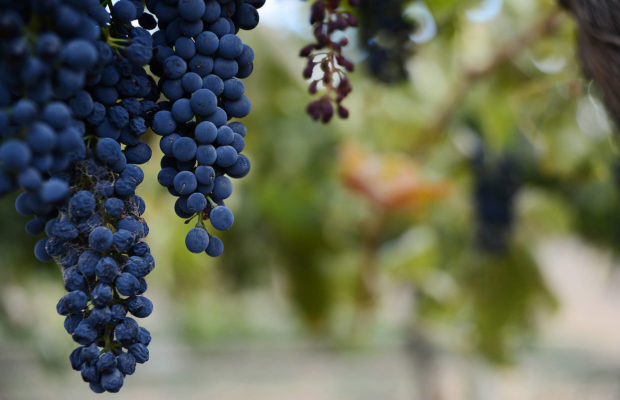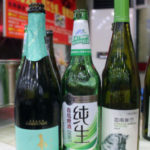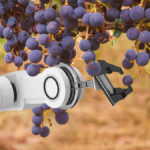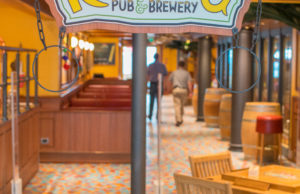Winemakers Target Genders With Grapes of Math

SYDNEY—When Constellation Brands Inc. rolled out a new wine range recently, it relied on a strategy that doesn’t always mix well with consumers: gender-based marketing.
The website for the Callie Collection, named after the California coast where the wine grapes are grown, shows four women in a backyard, spreading a picnic blanket on the grass near a pool. Wine varieties—Chardonnay, Pinot Grigio and a red blend—were chosen because of their popularity with women. The bottle’s purple label with floral images was designed to attract female shoppers’ attention in a wine aisle dominated by dull colors.
“We wanted to celebrate the moments that women spend with their girlfriends…because every woman can connect with that emotion,” said Paige Guzman, director of wine innovation at Constellation Brands. She said that distinguishes the brand from standard wine advertising, which involves bottles “in the kitchen with cheese.”
The brand represents a new approach for Constellation, which also recently launched Ravage, a red-wine brand geared toward men with horseback-riding knights on its labels.
Beer sellers have long used ads that play to male machismo. But the gender-based approach has been less common in the wine industry, where vintners have relied on tasting notes and tradition to drive sales. Some lines targeting women have been around for a while, like Skinnygirl and Little Black Dress in the U.S., but the approach is gaining favor among more of the biggest global winemakers.
Underpinning the shift is recent data showing that women make up a larger portion of wine drinkers than men and are more likely to drink wine for social occasions, offering a market opportunity for brands that can successfully connect with those consumers. In the U.S., women make up 56% of all wine drinkers, while women between the ages of 22 and 30 make up 66% of high-frequency wine consumers in that age group, according to the Wine Market Council, a trade group made up of grape growers, wine producers and distributors.
Marketing wine in this fashion could help increase sales in an environment where wine has lagged behind beer and spirits, as craft breweries and distilleries boost demand. In 2015, the volume of beer sold in the U.S. increased 2.5% from the previous year, while spirits rose 3.4% and wine was 2.1% higher, according to figures from Euromonitor International.
Australian-based Treasury Wine Estates Ltd. got seven women together from different corporate departments to redesign Truvée, a U.S. label derived from the French word for “to find.” In Australia, it is available in Pinot Gris and a rosé and will also be sold in Europe and Asia in the coming years. Truvée will target women in their 30s and complement Treasury Wine’s new male-focused brand The Stag.
“I’m not limiting the investment behind this brand,” Chief Executive Michael Clarke said in a recent interview about Truvée.
Closely held Accolade Wines, also based in Australia, in November launched a pink version of its Sauvignon Blanc Ta_Ku brand. It recently rolled out a fruity range across three existing labels, aimed at wine drinkers between 25 and 34 years old. Accolade says women make up 74% of that age group in Australia.
Many of the new female-focused brands are going upmarket, seeking to tap into a continuing premiumization of wine as lower-cost craft beers take away market share from cheaper wines. Callie will sell for US$14.99, Truvée will sell for 19.99 Australian dollars (US$14.40) while the pink Ta_Ku will retail for A$14.99.
Still, some experts doubt the gender-based strategy will work, and point out that earlier attempts to court women drinkers have failed. Treasury Wine, for example, pulled low-calorie wine from U.S. shelves in recent years, and Molson Coors Brewing Co. withdrew an attempt to sell pink-colored beer specifically to women.
Women have “really embraced the beer category, not because the craft segment came out with pink bottles,” said Spiros Malandrakis, senior alcoholic drinks analyst at Euromonitor in London. “It is because they didn’t patronizingly speak in the advertising campaign in a very macho, aggressive language like most beer advertising used in the past.”
Capi Odouard, a 30-year-old doctor in Sydney who buys a bottle of wine about once a week, said she would probably be less likely to purchase wine if it appeared to be targeting women specifically.
“I just don’t feel like they take their wine seriously if they have a cute puppy on it,” she said, though she added that at least one of her friends would disagree.
Some academic research suggests there is little difference between the shopping behavior of men and women when buying wine. Sharon Forbes, a senior lecturer in marketing at Lincoln University in New Zealand, said female-focused brands could lose out on sales if a woman is looking to share with her husband, for example, in which case she may purchase a more neutral bottle.
“This is clearly a growing market segment and so you have to say that the strategy is a good one,” Ms. Forbes said. “But it is also probably a strategy that is difficult to get right. It is possible that many women might think that a wine designed for females only is somehow inferior.”



















